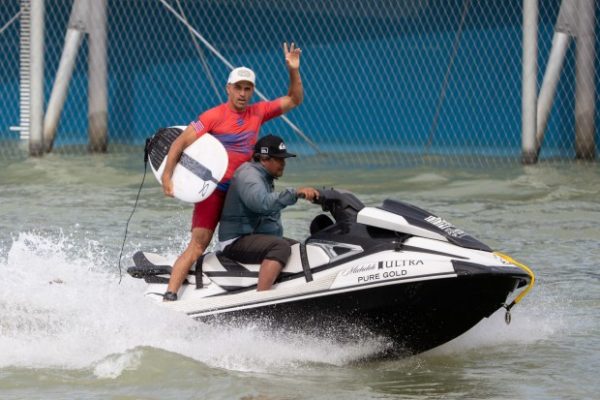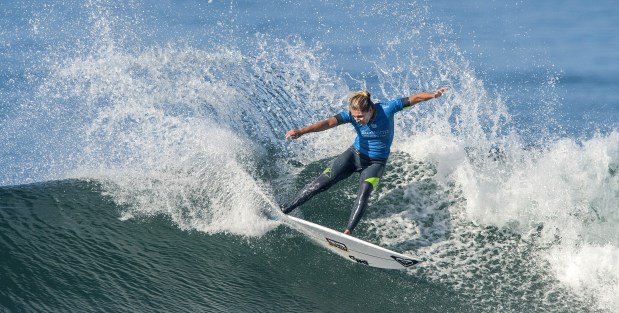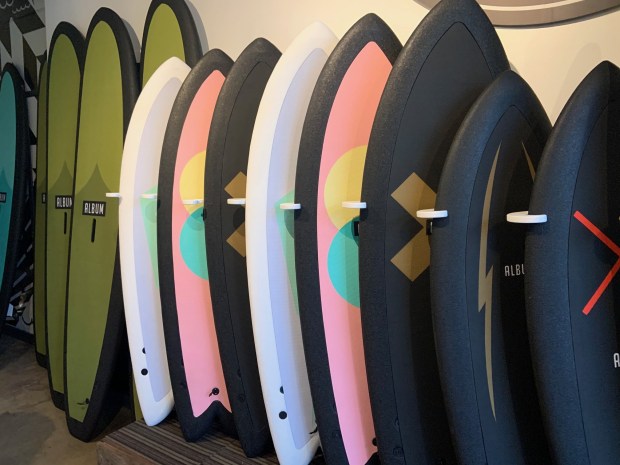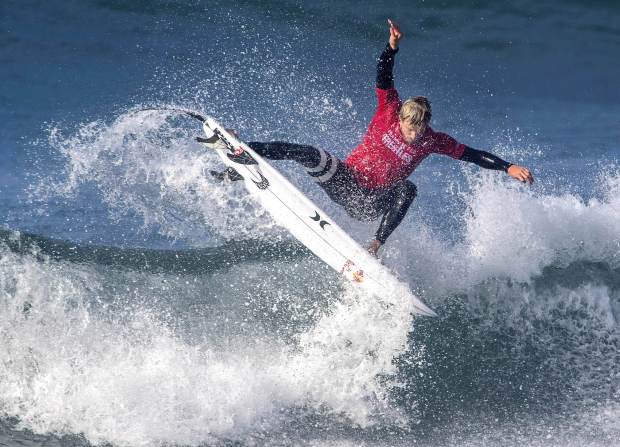
What will happen to surfing as we ride a wave into the next decade?
It was a question posed to Peter “PT” Townend, surfing’s first world champion, for a story the Orange County Register published as 2010 approached, a chance to predict what was ahead for the sport and the culture.
As we head into 2020, it’s a perfect opportunity to reflect on those predictions made 10 years ago — to see which ones were spot on and which were wipeouts. It’s also a chance to predict what surfing might look like in the future.
In 2010, Townend predicted that Stephanie Gilmore would win her 11th ASP Women’s World Title to set the all-time record for ASP championships.
Gilmore did, in fact, add a few championships to her resume — four since 2010 to make for seven total titles. But it was Kelly Slater who reached the 11 mark by earning a title in 2010 and again the following year.
Oh, and the ASP (Association of Surfing Professionals) dissolved and is now the World Surf League.

Townend predicted that at age 48, Slater would be granted a wildcard to the WCT Billabong Pipeline Masters and would reach the finals, losing to Huntington Beach surfer Kanoa Igarashi.
It was a wild notion a decade ago that Slater would still be surfing the Pipe Masters as he nears 50, but there he was again this year, not needing a wildcard because he’s still one of the world’s top surfers and not only reaching the semifinals, but clinching his third Vans Triple Crown of Surfing title.
Sign up for our Coast Lines newsletter, a weekly digest of news and features on how the residents of the SoCal coast are building ties to their changing environment. Subscribe here.
Did Surfline develop forecasting technology that allows a personal device to be embedded into your surfboard, to alert you to the next set with size and direction of the approaching swells? It was a swell notion, but that one hasn’t happened yet.
Surfline, though, certainly has made technological leaps, including enabling surfers to record “Surfline Sessions.” They can now download video of themselves surfing, to their phone, by the time they get out of the water.

This prediction by Townend was pretty spot on: “Now with acceptable Wavepool technology, surfing will finally make it into the Olympics fulfilling ISA President Fernando Aguerre’s dream.”
Both wave pool technology and surfing in the Olympics were just a dream in 2010, but here we are a decade later with wave pools popping up inland around the world and surfing set to make its Olympic debut at the Tokyo Games in 2020.
While surfing’s debut will take place in the ocean, a wave pool in Japan just so happens to be in the works before the Olympics kick off.
Townend predicted gated surf communities “with a centralized wave pool for a daily dose of waves.
“(Slater’s) concept, like the golf course communities, becomes a reality,” he predicted.
Slater, himself, opened the Surf Ranch in 2018, accessible only if you have big bucks, in the agricultural center of California.
A wave pool plan in Palm Desert just got the go-ahead from city officials. It’ll be a resort-style destination complete with cabanas and condos you can buy adjacent a golf course. And others, like one in Waco, Texas, already are making waves for inland surfers.
Here’s one forecast from 2010 about surfboard design: “The latest surfboard technology allows new boards to be computer generated ready on-site in less than an hour with space-age materials … enabling the surfers to reach new heights of performance,” Townend predicted.
Well, more and more shapers are using computers to create boards, but ready in less than an hour? Not happening, yet.
Last of Townend’s predictions was that at the 2020 Billabong XXL Awards, three of the nominees for “Ride of the Year” would be in the 100-foot range — with San Clemente’s Greg Long being one of them.
In 2013, surfer Garrett McNamara made headlines for a wave that, unofficially, was said to be close to 100 feet at Nazare, Portugal. But it was Brazil’s Rodrigo Koxa that earned a place in the Guinness World Records, at the same spot, for his 80-foot wave in November 2017.
There were a few surprises the past decade that no one could have predicted.
Who would have thought soft tops would turn cool? It used to be only novices and young kids would dare be seen on a soft-top board, but somehow the tide turned.
Much credit should go to Catch Surf, a San Clemente company that started producing performance soft tops and branding them as a not-so-serious way to ride waves. Other brands have followed in recent years, with Album Surfboards in San Clemente recently releasing a line of sleek soft tops made from recycled materials.

Billabong and Quiksilver merging together? Two top surf brands, rivals since the dawn of the surf industry, under the same umbrella company? Who would have thought these archnemeses would be part of the same family, but that’s just what happened in 2018.
So what’s next?
As we enter a new decade, there are some ideas floating around about where the sport will be heading.
Townend gave us a few to chew on.
Surfing in the Olympics will grow the culture globally like never before, and if a USA team member wins one of those six gold medals in the next three Summer Olympics, Townend predicts, he or she will make the Wheaties cereal box — the first surfer ever to do so.

A few others: Asia will be the surf industry’s number one growth area. Caroline Marks will win WSL World Women’s titles. Slater will still be winning heats in his ’50s.
Several other surfers chimed in with their predictions. John Oxarart, for one, thinks Slater will win his 12th world title — then go on the pro golf tour.
Many predictions revolve around wave pools and their impact on the sport.
Janice Aragon, executive director of the National Scholastic Surfing Association, predicts more inland college surf teams will form and compete in collegiate surfing events with the expansion of wave pools. This also will create another avenue of scholarships from colleges and alumni, for surfers wanting to pursue their education.
Don Ramsey thinks wave parks will be as common as theme parks and Huntington Beach will have one.
And with that explosion, Louis Rice believes the sport will become mainstream. He said what he sees on social media, in Costco and on webcams showing surf conditions in real time suggest this is already happening.
“Surfing is no longer the sport of rebels, it has become mainstream, much to the chagrin of those of us who began in a time (and more importantly in a place) when lineups were still empty,” he wrote. “What the next decade holds: more crowded lineups. Further commoditization of the entire surfing lifestyle. Wave pools galore. Further overpopulation in the water.”
Kelly Miller, CEO of Visit Huntington Beach, believes we may see small, easy-to-install wave technology units for personal ownership, creating ways to adapt existing swimming pools into wave pools. There also will be motorized surf boards affordable enough to help folks catch more waves and paddle less, he wrote.
But let’s hope one thing won’t change in the future: that thrill you get with every wave.
Enjoy the ride.






Recent Comments